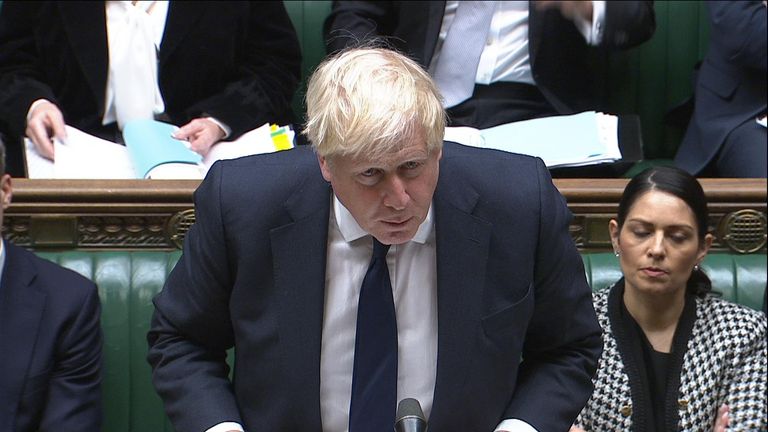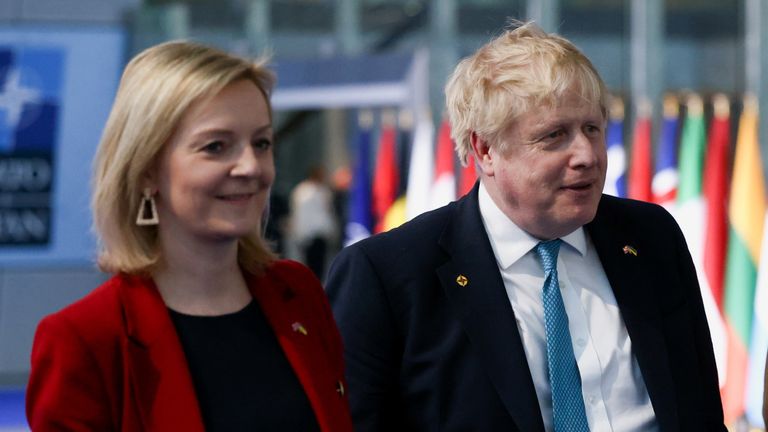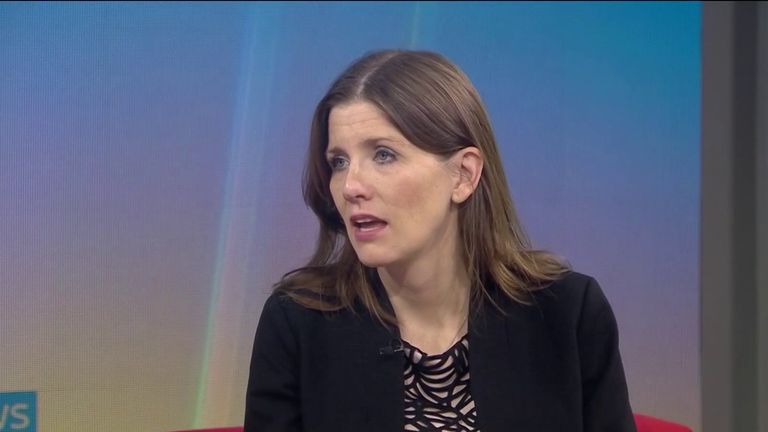The Online Safety Bill began life as a white paper – a government policy document – in 2019.
Its aim? To regulate online content to help keep users safe, especially children, and to put the onus on companies to protect people from the likes of abusive messages, bullying and pornography.
But the government also wants to balance that safety online with freedom of speech and a right to privacy, which is not as straightforward as it may sound.
It has been a long and rocky road for the prospective bill, filled with delays and controversies, so let’s look at how we have got here and what the future holds for the legislation.
Politics live: Government accused of ‘hugely backwards step’ over bill
Despite the idea first emerging in 2019, the draft proposals for the Online Safety Bill did not make an appearance until May 2021, with ministers blaming delays on COVID-19.
However, when the measures did surface, they promised to help keep children safe and tackle online abuse.
The crux of the plan was to make Ofcom the new regulator of internet firms, with the power to fine them up to 10% of their global turnover if they failed to take down harmful content.
But while there was wide agreement over some of the material the bill would cover – namely what was already illegal under English law, such as images of child abuse – the plan also wanted to make companies take down material that was considered “legal but harmful”.
This three-word phrase, at this point undefined by the government, was set to dominate the bill’s future.
For technology companies, the fear was it would not be clear what they were expected to censor, and they demanded more clarity.
And for some Tory MPs – including the influential minister Kemi Badenoch – they were concerned the rule overreached and firms would err on the side of caution to avoid the hefty fines threatened by the government, leading to a direct threat to free speech.
The then-culture secretary Nadine Dorries, who was leading on bill, insisted it was “quite clear” what the bill intended and that it would not limit freedoms to express opinions, but critics remained unconvinced.
Pre-legislative scrutiny took place in parliament in the final months of 2021 with a joint committee made up of members of the House of Commons and House of Lords looking into it and producing a report.
The legislation was officially introduced to the Commons in March 2022, almost three years after the white paper, and included new measures, such as criminalising cyber-flashing, tackling online scams and granting the right of appeal to people who think their posts shouldn’t have been removed.
Yet there was still no definition of the so-called legal harms – just the promise it would be set out in further legislation down the track.
Leadership change
Instead of progressing though, the law was again hit by delays, this time due to the trials and tribulations within the Conservative Party.
The bill was due in the Commons at the end of July to secure its passage to the Lords before the summer recess.
Then Boris Johnson announced his resignation as prime minister.
After he insisted he would stay in post until September while a leadership contest was carried out, Labour tried to force a motion to oust him sooner.
But instead, this led to the final parliamentary time ahead of the summer break being used by the Tories to call a confidence vote in itself to foil Labour’s plans, and saw the bill pushed back again.
The future of the law was then up in the air, with a new leader set to take the keys to Downing Street.
But days into her premiership, Liz Truss told MPs it would be safe in her hands.
To the joy of the bill’s critics, she said “some tweaks were required” to ensure “we protect the under-18s from harm [and] we also make sure free speech is allowed”.
And the bill was set to return to the Commons at the start of November.
Instead, the government was thrown into disarray again when another prime minister announced her departure.
Yet again the legislation was pulled and with no date offered for when the new PM, Rishi Sunak, would return with the bill, there was anger from children’s charities, warning every delay was putting more young people in harm’s way.
Ms Dorries also warned the frontbench should be prepared for “one mother of a massive fight” with female Tory MPs if the bill was watered down, attacking her successor Michelle Donelan in the House magazine, saying she had “been in the job five minutes and does not understand enough about it”.
The controversial clause
Fast forward a month and it brings us to the government’s new announcement – the bill is back and with some significant changes.
Ms Donelan has, for example, outlined how firms will be forced to show how they are stopping children under 13 from signing up to social media sites.
But the headline of the bill’s return is the ditching of the “legal but harmful” element of restrictions.
The new culture secretary has taken quite a different approach to Ms Dorries, saying the original clause “violated the rights of adults to choose what legal speech they say and see”.
Platforms will still be required to remove illegal content – including any material encouraging self-harm, which will be outlawed by the government as part of the update – as well as any material that is in breach of their own terms of service.
But instead of their legal but harmful duties, they will have to provide adults with tools to hide certain content they do not wish to see – such as posts related to eating disorders, misogyny and other forms of abuse.
The government is calling it a “triple-shield” of online protection that also allows freedom of speech.
Not everyone is happy with the change though.
The chief executive of Samaritans has called it a “hugely backward step”, while Labour has claimed it will “embolden abusers, COVID deniers, hoaxers, who will feel encouraged to thrive online”.
And even the critics of the “legal but harmful” clauses are still wary.
Senior Tory David Davies said he was concerned provisions allowing the government to order firms to examine private messages set out within the bill could “undermine end-to-end encryption” and threatened privacy and freedom of expression.
The legislation is due to return to the Commons in December, and the PM’s official spokesman has said they want it to be enacted as soon as possible.
But there will be battles with backbenchers, and who knows what the Lords will think. It could take some time for the proposals to become a reality.




